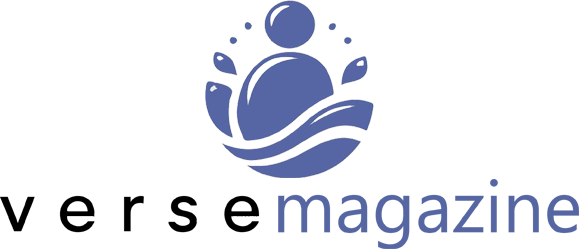In the digital age, the way people consume news has transformed dramatically. Traditional journalism, once dominated by established newspapers and television networks, now shares space with online blogs, independent platforms, and social media voices. Among these alternative outlets, one name that has sparked both interest and controversy is Before Its News.
Promoting itself as a citizen journalism platform where users can “share the news before it’s news,” the site has become a hub for independent reporting, opinion pieces, and conspiracy-related content. While supporters hail it as a voice for free expression and uncensored reporting, critics warn that it often spreads unverified or misleading information.
This article explores the origins, mission, influence, and controversies surrounding Before It’s News, examining its role in the broader ecosystem of online media.
What Is Before Its News?
Before Its News (BIN) is a user-generated news website that allows anyone to publish stories, videos, and reports on a wide range of topics, from politics and science to spirituality and the paranormal. The platform operates on the principle that traditional media outlets often censor or ignore stories that do not align with mainstream narratives.
Founded in 2008 by Chris Kitze, Before It’s News positioned itself as an alternative to corporate-controlled news networks. Its slogan, “You report the news,” emphasizes the idea of open journalism, empowering everyday citizens to share information directly with a global audience.
The site’s structure is similar to a blog network or content aggregator: contributors submit stories, editors review them lightly, and the articles are categorized under sections such as:
-
Alternative News
-
World News
-
Health
-
Science and Technology
-
Paranormal
-
Politics
This open-access approach has made the site popular among independent thinkers, whistleblowers, and those skeptical of mainstream media narratives.
The Mission and Philosophy Behind Before It’s News
Before It’s News operates under the ethos of transparency, free speech, and citizen empowerment. The site’s founders argue that conventional news organizations are constrained by corporate ownership, advertising interests, and political agendas. By contrast, BIN offers a platform for anyone — regardless of credentials — to publish and share information that might otherwise be suppressed.
Its philosophy can be summarized in three principles:
-
Freedom of Expression: Anyone can publish, as long as they adhere to basic content guidelines.
-
Citizen Journalism: Users become reporters, sharing firsthand experiences or independent investigations.
-
Decentralized Media: Information is no longer controlled by a few powerful networks but by the collective voices of individuals worldwide.
To its supporters, Before It’s News is part of a grassroots movement that democratizes journalism — allowing ordinary people to participate in shaping public discourse.
Content Found on Before It’s News
Before It’s News covers a broad and eclectic mix of content, including:
-
Breaking political news and commentary
-
Whistleblower reports and alleged insider leaks
-
Conspiracy theories about global governance, finance, or technology
-
UFO sightings and paranormal phenomena
-
Health and wellness advice
-
Predictions and prophecies from independent thinkers
Because contributors are not bound by the editorial restrictions of mainstream outlets, the topics are often unconventional, speculative, or sensational. Articles may blend fact, opinion, and speculation, creating an alternative narrative space that appeals to readers disillusioned with corporate media.
The Popularity and Reach of Before It’s News
In its early years, Before It’s News gained massive traction, particularly during major political events and crises when audiences sought alternative explanations or “hidden truths.”
By leveraging search engine optimization (SEO) and social media sharing, the site attracted millions of monthly visitors at its peak.
BIN became especially influential in communities interested in:
-
Conspiracy research
-
Alternative medicine
-
Spiritual awakening movements
-
Anti-establishment politics
Its user-driven structure enabled stories to go viral quickly, bypassing traditional journalistic gatekeeping.
Criticism and Controversy
Despite its popularity, Before It’s News has faced significant criticism from journalists, fact-checkers, and media watchdog organizations. The main concerns center on credibility, misinformation, and lack of editorial oversight.
1. Misinformation and Conspiracy Theories
Critics argue that the platform frequently publishes unverified or false claims, ranging from political conspiracies to pseudoscientific health remedies. Fact-checking sites such as Snopes, PolitiFact, and Media Bias/Fact Check have listed BIN as a source of questionable reliability.
Common examples of misinformation spread through the platform include:
-
False reports of global disasters or “government cover-ups.”
-
Claims about “deep state” operations or secret technologies.
-
Health misinformation promoting unproven treatments.
2. Lack of Editorial Accountability
Unlike mainstream newsrooms that require multiple source verifications, BIN allows content with minimal editorial intervention. As a result, rumors and speculative content can appear alongside legitimate user reports, making it difficult for readers to distinguish fact from fiction.
3. Reputation and Search Engine Restrictions
Due to repeated issues with misleading information, Google News and Facebook have restricted or de-prioritized BIN content. Many cybersecurity experts also warn that some BIN-related links can lead to clickbait or ad-heavy pages.
4. Impact on Public Perception
Media analysts argue that platforms like Before It’s News contribute to the polarization of public opinion, as users often consume stories that reinforce existing beliefs rather than challenge them.
Supporters’ Perspective: A Platform for the Unheard
Despite criticism, Before It’s News retains a dedicated user base that defends it as a bastion of free speech and independent inquiry. Supporters argue that:
-
Mainstream media frequently ignores controversial or whistleblower stories.
-
Readers should have the freedom to access alternative viewpoints, even if they challenge consensus narratives.
-
BIN encourages critical thinking, prompting individuals to do their own research rather than accept official reports at face value.
For many, the site represents digital rebellion against media monopolies and political censorship. They believe that truth often emerges from diverse, independent voices rather than centralized institutions.
The Role of Before It’s News in the Digital Media Ecosystem
Before It’s News occupies a unique niche in today’s media landscape. It exists at the intersection of grassroots journalism, social commentary, and digital activism. Whether one views it as a necessary outlet for free expression or a source of misinformation, its impact on information democratization cannot be ignored.
1. A Catalyst for Citizen Journalism
Before It’s News inspired many individuals to explore independent reporting, creating a generation of self-publishing writers who bypass traditional media structures.
2. The Blurring of News and Opinion
Platforms like BIN highlight the blurred line between factual reporting and opinion sharing — a hallmark of the modern digital age. This raises important questions about media literacy and responsibility in online publishing.
3. Alternative Narratives and Public Discourse
Even when controversial, BIN stories often spark conversations that might not surface in mainstream media. For example, alternative discussions about surveillance, corruption, or global policy can push readers to explore topics further.
Media Literacy and Reader Responsibility
In an environment where information is abundant but verification is scarce, media literacy becomes essential. Before It’s News demonstrates both the power and risk of open-access journalism.
To navigate such platforms responsibly, readers should:
-
Cross-check information with multiple reputable sources.
-
Distinguish between opinion and factual reporting.
-
Be wary of sensational headlines or emotional triggers.
-
Consider the author’s background and motivations.
-
Look for credible citations and evidence within articles.
By applying critical thinking, audiences can appreciate alternative perspectives without falling into misinformation traps.
Regulation and Free Speech Debate
The debate over platforms like Before It’s News also touches on broader issues of internet regulation and free speech.
Supporters argue that censorship — even when targeting misinformation — sets a dangerous precedent that could silence dissenting voices. Opponents believe that platforms spreading falsehoods must be held accountable for real-world consequences, such as public confusion or health risks.
This ongoing tension reflects the complex balance between protecting free expression and maintaining public trust in information systems.
Before Its News in the Era of AI and Misinformation
As AI-generated content becomes more prevalent, platforms like Before It’s News face new challenges. The risk of deepfakes, synthetic articles, and algorithmically generated disinformation has grown dramatically.
For BIN to remain relevant, it may need to implement:
-
Stronger content verification tools.
-
AI detection systems for identifying fabricated media.
-
Transparent editorial labeling to separate fact-based reporting from speculative commentary.
At the same time, its community-driven model may continue to attract audiences seeking unfiltered perspectives — especially in a world where institutional trust in media remains low.
Conclusion
Before Its News embodies both the promise and peril of the modern information age. It champions free speech, independent reporting, and citizen empowerment, giving a voice to perspectives often excluded from mainstream narratives.
Yet, it also illustrates how open-access platforms can become breeding grounds for misinformation, eroding trust in journalism and amplifying unverified claims.
Ultimately, Before It’s News stands as a case study in digital democracy — a reminder that freedom of expression must be balanced with responsibility, verification, and critical thinking. Whether seen as a revolutionary news outlet or a cautionary tale, its influence on the evolution of online media is undeniable.







